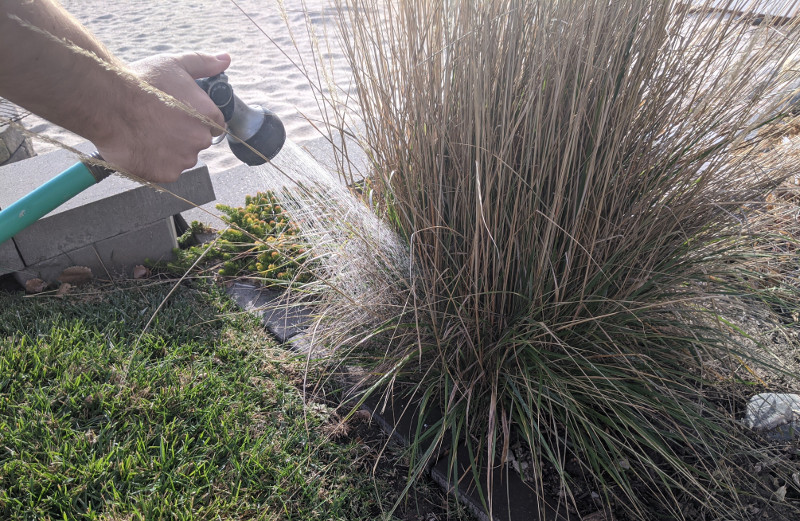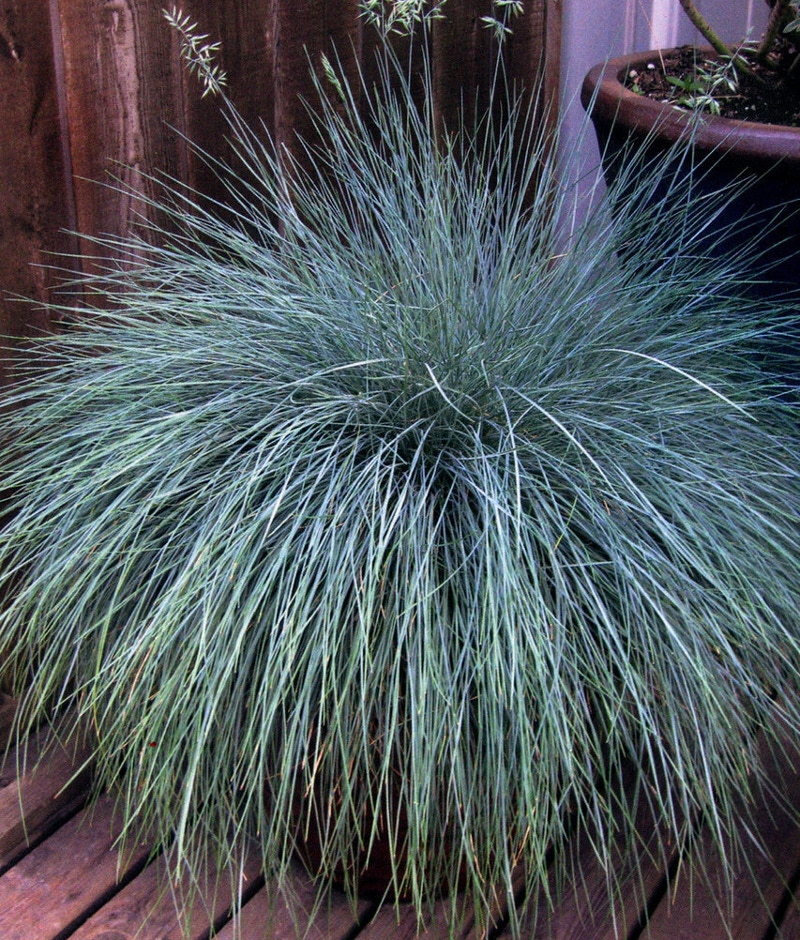Ornamental grasses can be used in almost any garden theme. The plants are easy to care for, provide 4 seasons of interest and are widely adaptable to many different conditions. Ornamental grasses are available for growing zones 3 to 11 and can grow between 6 inches tall, up to 6 feet tall! You can grow them in partial sunlight to full sunlight. There are several different types of grasses, but the main categories are cool season, warm season and evergreen. Read more about cool season vs warm season grasses.
Grasses are among the easiest xeric plants you can have in your garden. They’re mostly free of pests and diseases. Some cool-season grasses bolt in the heat, but trimming off their seedheads can rejuvenate the plant, much like clipping off flowers of herbs to force growth back into leaves. Most ornamental grasses are warm-season selections, best planted in the spring.
They need a little more water, up to once a week for xeric choices, for the first month or two. After that, water deeply only every few weeks or once a month in the hottest summer weeks.Some will spread, and it’s best to try to divide or dig up unwanted volunteers before they clump too tightly. Other than that, just cut back as directed.
Allowing several grasses to overseed in winter could add to your fire hazard, so keep that in mind if you have them near your home or a commercial building.

Planting Ornamental Grass
Choose a location that gets the proper amount of sunlight for the specific ornamental grass you have. Or be sure to choose the right type of grass for the location you have in mind. Getting the proper amount of sunlight is quite important. Also, be sure the soil is well-drained as most grasses do not like to stay wet, and prefer dry soil over being too wet. Ornamental grasses can help with erosion, provide 4 seasons of interest, and also do quite well in garden planters!
Watering Ornamental Grass
Most ornamental grass will not require any additional water once the plant is established. If the plant is new or young, you may want to provide supplemental water with a hose or watering can once a week. Otherwise, most ornamental grass will thrive on little water and is quite drought tolerant.

Fertilizing Ornamental Grass
Most ornamental grass does not require fertilizer at all. There is more risk of over-fertilizing than the plant not getting enough nutrients. The main exception is if you choose to grow ornamental grass in containers outside. Often the soil will lack nutrients after a year or two, and a small application of fertilizer can help out quite a bit. If you are growing grass in the ground, fertilizer is more than likely not necessary.

Ornamental Grass Winter Care
We recommend leaving ornamental grass alone in the fall and early winter. This will allow the plants to give 4 seasons of interest in the garden. Most grasses require no care in the winter. If you don't cut the grass back, it can look quite beautiful once frost or snow covers the grass. It also provides great shelter for local animals living nearby.

Cutting Back Ornamental Grass
Cutting back ornamental grass can help larger clumps be more healthy. Often the inside portion of large ornamental grasses will start to rot and grow into a ring shape. By cutting back the grass, it will help it grow new growth and get more air circulation to the inside of the clump, which can help prevent that part of the plant from rotting. We recommend cutting back the grass in late winter or early spring if you do choose to cut the grass back.
Dividing Ornamental Grass
Once larger ornamental grasses become established, the plants become big enough to split and transplant into different locations. Some grasses actually benefit from dividing them, because the inside of the grass struggles to get enough sunlight and dry out between waterings. When this happens, the ornamental grass will start to rot in the middle, almost forming a ring of grass. It is beneficial to divide the plants every 2 to 3 years as each grass clump becomes larger.
Dividing should be done in late winter or early spring before new growth starts to emerge. By the fall, each new clump of grass should become a nice new cluster of grass that looks fantastic in the garden. This is also a cost savings approach to gardening, as you won't need to purchase as many plants if you divide them instead.
Common Ornamental Grass Care Questions
Are Ornamental Grasses Invasive?
Some ornamental grasses certainly can become invasive in some areas, and choke out other species, both native and otherwise.
Is Ornamental Grass Annual Or Perennial?
Most ornamental grasses are perennials, though there are a few that are annuals and do not come back each year, particularly in colder climates.
Are Ornamental Grasses High Maintenance?
The majority of ornamental grasses are very low maintenance, requiring very little water or fertilizing, deadheading or pruning.
How To Rejuvenate Ornamental Grass?
Cutting perennial ornamental grasses down to within 2 inches of the soil, either in late winter or early spring, can help rejuvenate the plant. Digging them up and dividing them every few years will help, also.
Are Ornamental Grasses Drought Tolerant?
Most varieties of ornamental grass are drought tolerant, once they're well established. Cool-season grasses will likely need more water during the hottest parts of the summer.
What Is The Growth Rate Of Ornamental Grass?
Depending on what kind of ornamental grass we're talking about, as well as other variables, soil quality, climate, etc ornamental grasses, very generally, grow between 4 and 8 inches annually.
Do Ornamental Grasses Spread?
Some ornamental grasses are spread either by under- or above-ground stems. Some grasses are clumping and the clumps slowly increase their diameter.
Have a question about Ornamental Grass? Fill out the form below and we will try and get back to your question as soon as possible. We may even feature your question in this article to help other gardeners!
 |
Author Chris Link - Published 11-14-2020 |
